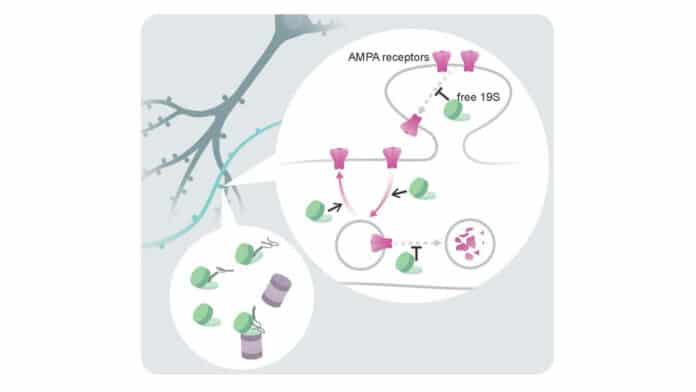In a groundbreaking discovery, scientists have uncovered fascinating insights into the brain’s protein-destruction machinery and its role in synapses. This revelation has unveiled a promising avenue for addressing various neurological disorders.
By understanding how this intricate system functions, researchers can develop targeted therapies that could potentially revolutionize the treatment of these conditions. This newfound knowledge has opened up exciting possibilities in neuroscience and offers hope for individuals suffering from neurological disorders worldwide.
A recent study published in Science has shed light on a remarkable finding regarding the brain’s protein-destruction machinery, known as the proteasome. While its primary function is clearing proteins within the brain, researchers have discovered that a vital component of the proteasome, the 19s regulatory particle, has an unexpected secondary role at synapses.
This “moonlighting” function suggests that proteins within the brain can adapt and perform new functions in different contexts, potentially opening up new avenues for diagnosing and treating various neurological disorders. This discovery challenges conventional understanding and highlights the dynamic nature of synapses, providing valuable insights into how the brain responds to diverse circumstances.
Scientists have traditionally associated the regulatory (19S) proteasome particle with its role in the proteasome complex, which works with the catalytic (20S) particle to identify and eliminate unwanted or damaged proteins. This mechanism is vital for the proper functioning and development of the brain. However, researchers observed a surprising discovery by using a powerful imaging technique called DNA PAINT.
They found that within synapses, there is a significant presence of isolated 19S particles, existing independently without their usual 20S partners.
“We realized that 19S is not only a partner of 20S. It also works alone as an independent regulator for many key synaptic proteins. This revealed a whole new dimension to our understanding of protein function at synapses,” explains Chao Sun, Associate Professor and lead author of the article.
Scientists have discovered that free 19S particles regulate information transfer and storage at synapses. These particles normally break down proteins, but they seem to be repurposed at synapses to perform other functions.
Further research is needed to understand the function of these particles fully, but this discovery is a promising step toward developing new treatments for neurological diseases.
Journal Reference:
- Chao Sun, Kristina Desch, et al. An abundance of free regulatory (19S) proteasome particles regulates neuronal synapses. Science. DOI: 10.1126/science.adf2018
